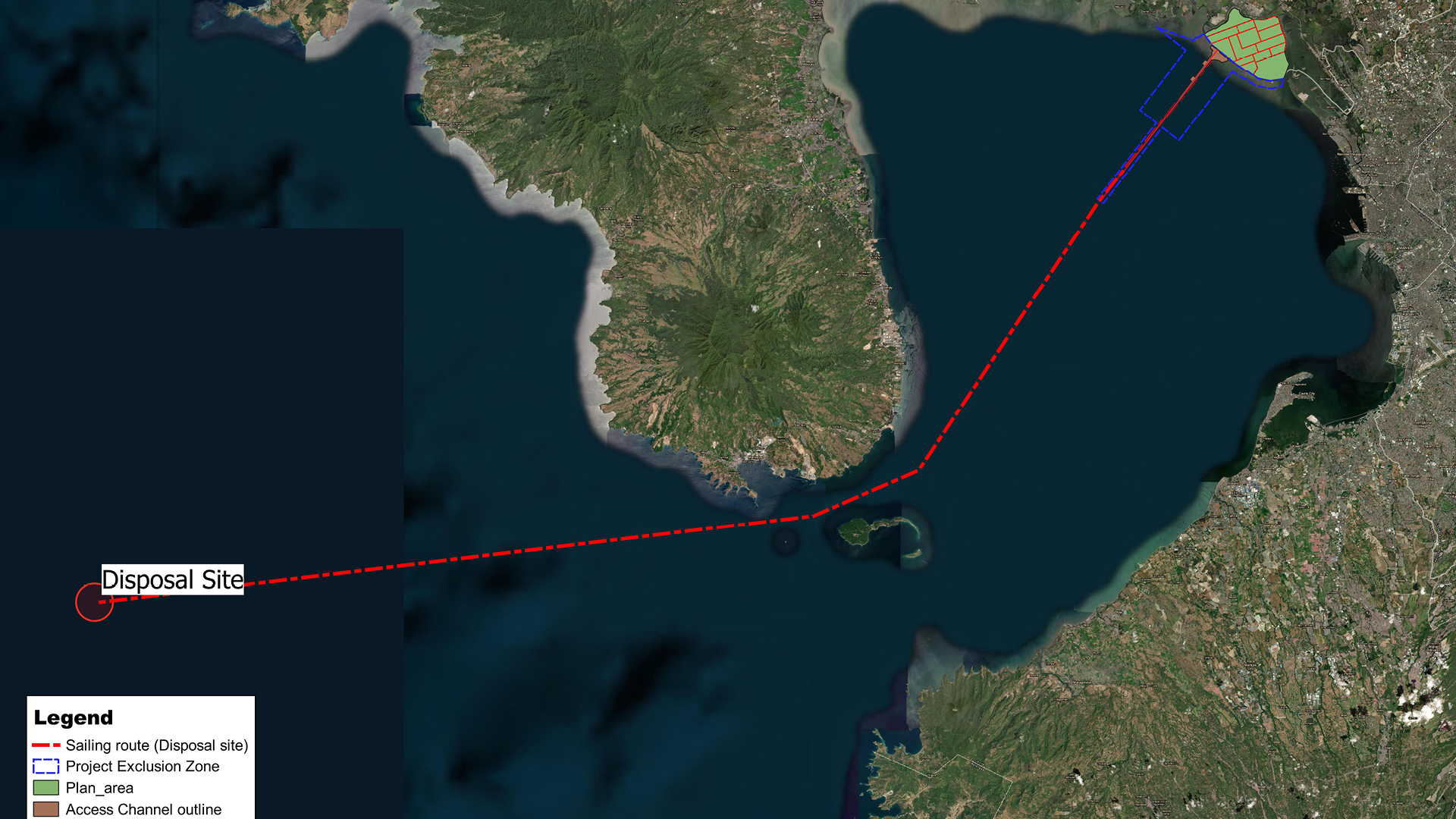Access Channel
The new Manila International Airport (MIA) will be constructed in an area which currently has limited draft. Near the airport, existing water depths are around 0.5 meter, which is too shallow for vessels to approach the site of the future airport. To enable waterborne access to the site, which is essential for the development of the airport, an Access Channel will be dredged. Trailing suction hopper dredgers will use the channel to supply sand, needed for the construction of the airport’s land platform. Transport vessels will make use of the channel to supply the equipment and materials for the construction of the airport itself. The possibility of waterborne access to the airport provides an alternative for traffic over land, keeping nuisance to surroundings to a minimum.
At the end of the Access Channel, a turning basin and marine facilities will be constructed to accommodate the supply of sand as well as the manoeuvring and unloading of vessels. From there, the Access Channel spans a direct line to the marine facilities and has a length of about 15 kilometers, orientated nearly perpendicular to the coastline. The Access Channel is dredged by cutter suction dredgers and trailing suction hopper dredgers, starting from the bay and working towards the shore. They will dredge approximately 23 million cubic meters of material, which is transported to an offshore disposal site. Dredging of the Access Channel is scheduled to take place in the second half of 2021.
Disposal site
The dredged material from the Access Channel will be disposed at an approved offshore disposal site located outside of Manila Bay. This disposal site is located approximately 115 kilometers outside of Manila Bay. The dredged material consists of soft silt and clay, which is unsuitable to be re-used in the land formation for the airport platform. Once loaded with dredged material, a trailing suction hopper dredger will sail to this disposal site outside Manila Bay, which is licensed by the Philippines Coast Guard and for which a permit was granted to deposit material dredged from the access channel.
The dredging and disposal method has been designed to create a minimal impact on the surroundings of the project and monitoring schemes are setup during the activities.
The disposal site was selected with the Philippine Coast Guard on the basis that it is remote, non-sensitive and all the licenses and permits are in place. With the selection of this location and methodology we aim to minimize our impact on the project surroundings.

